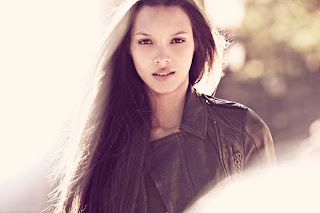The issue of diversity has been a point of contention in the fashion industry since its inception. It has only been in recent times however that the topic of diversity has been open to discussion within fashion circles. In January 2008, former model agent owner Bethann Hardison held an open symposium to examine why models of colour are so poorly represented on fashion runways and in magazines. The event attended by models, designers, journalists, stylists and industry insiders was aimed at raising consciousness of the need for diversity and the collective responsibility of all to make a change in the fashion industry.
In July 2008, Vogue Italia cast the spotlight on the lack of diversity and the poor representation of women of colour on catwalks and in fashion magazines with it's "Black issue". The "Black issue" was conceived by editor-in-chief Franca Sozzani and featured an all black cast of eighteen new, established and past stars, lensed by photographer Steven Meisel. The response to the "Black issue" was unprecedented, with Conde Naste, the publisher, rushing a reprint and redistribution of 40,000 more copies of the magazine to meet consumer demand in the United States and Britain. The phenomenal response to the "Black issue" has implications for the fashion industry to embrace the diverse cultural and social differences within society and to ensure that all standards of beauty and not just the Western ideal, are represented.
At the recent Spring/Summer 2011 shows in New York however, models of colour were still poorly represented. Of the 128 shows presented, a total of 4170 runway looks were on offer. A statistical analysis conducted by jezebel.com found that of the 4170 opportunities, 81.8% went to white models and 18.2% to non-white models. Of the 18.2 %, non-white Latina models were used 95 times or 2.3% of the time, Asian models were used 296 times or 7.1% of the time, and black models were used 353 times or 8.4% of the time. Models of other colour such as Moroccan or Native Indian, were used 16 times or 0.4% of the time.
The visibility and presence of a model on the runways of New York, London, Milan and Paris has major implications. The shows provide models with the opportunity to be seen by important stylists, editors, designers and casting directors which influences the faces that will go on to feature in editorials, advertising campaigns and on the covers of magazines in the coming season. The buzz and hype surrounding a model during the shows is all-important and palpable, as industry insiders search for the next new face. With so few opportunities being offered to models of colour during show season, a model's hopes of breaking through the sea of new emerging faces is diminished.
It is unfortunate that the issue of diversity in fashion is still open to debate in 2010. An industry that is built on promoting beauty has a responsibility to reflect the society and world that we live in, and to celebrate our social and cultural differences. Models such as Iman Abdulmajid, Beverly Johnson, Karen Alexander, Kara Young, Liya Kebede, Liu Wen, Joan Smalls and Jourdan Dunn are amongst my favourite models, not because of their skin tone but because of their undeniable beauty and presence. The following models are stellar examples of the beauty of diversity.
It is unfortunate that the issue of diversity in fashion is still open to debate in 2010. An industry that is built on promoting beauty has a responsibility to reflect the society and world that we live in, and to celebrate our social and cultural differences. Models such as Iman Abdulmajid, Beverly Johnson, Karen Alexander, Kara Young, Liya Kebede, Liu Wen, Joan Smalls and Jourdan Dunn are amongst my favourite models, not because of their skin tone but because of their undeniable beauty and presence. The following models are stellar examples of the beauty of diversity.
 |
| Iman Abdulmajid Photographer - Francesco Scavullo |
 |
| Naomi Sims LIFE - October 1969 Photographer - Yale Joel |
 |
| Beverly Johnson Glamour - July 1972 Photographer - Unknown |
 |
| Sheila Johnson American Vogue - March 1980 Photographer - Patrick Demarchelier |
 |
| Naomi Campbell Source - Harpers Bazaar Photographer - Peter Lindbergh |
 |
| Louise Vyent American Vogue - February 1987 Photographer - Richard Avedon |
 |
| Veronica Webb Source - Model's Manual Photographer - Arthur Elgort |
 |
| Talisa Soto American Vogue - April 1989 Source - fmd1.com |
 |
| Patricia Velasquez Source - Mademoiselle Photographer - Patrik Andersson |
 |
| Kiara Kabukuru Source - Harpers Bazaar Photographer - Patrick Demarchelier |
 |
| Karen Alexander Source - American Vogue Photographer - Peter Lindbergh |
 |
| Kara Young American Vogue - October 1989 Photographer - Patrick Demarchelier |
 |
| Liya Kebede Vogue Italia - October 2002 Photographer - Steven Meisel |
 |
| Chanel Iman, Sessilee Lopez, Jourdan Dunn and Arlenis Sosa ID Magazine - September 2009 Photographer - Emma Summerton |
 |
| Liu Wen Source - China Vogue Photographer - Unknown |
 |
| Melodie Monrose and Anais Mali Interview - December 2010 Photographer - Solve Sundso |
 |
| Joan Smalls Photographer - James Mahon |
 |
| Fei Fei Sun China Vogue - June 2010 Photographer - Gem Mitchell |
 |
| Lais Ribeiro Photographer - Rony Shram Source - Fashion gone rogue |










































